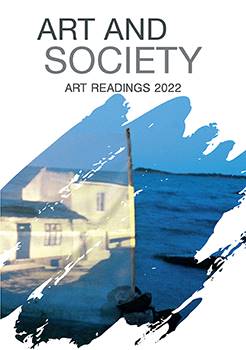Ланчелото – Конско евангелие за народняците (1910) или за политическото четене на „конско“ чрез карикатурната илюстрация
Reading the Riot Act to the Populists (1910) by Trifon Kunev or on the political dressing-down via satirical illustrations
Author(s): Milena GeorgievaSubject(s): Fine Arts / Performing Arts, History of Art
Published by: Институт за изследване на изкуствата, Българска академия на науките
Keywords: caricatures; satirical illustration; collections of satirical stories; People’s Party; political party leaders; “Reading the Riot Act”; Lancelotto (Trifon Kunev); Alexander Bozhinov
Summary/Abstract: In the early twentieth century, Bulgarian literature saw collections of satirical short stories, parodying and deriding the mores of the political parties in Bulgaria’s political life. Especially attractive to the public were those illustrated with caricatures. What we have here is direct interaction between art (author) and the society (consumer), while the figure of the illustrator is the intermediary. One of the earliest illustrated Bulgarian collections was Reading the Riot Act to the Populists by Trifon Kunev (1910). It contains satirical short stories of the type of feuilletons about the leaders of the People’s Party, who were Russophiles and the main opponent of the then incumbent Democratic government (1908–1911). Its political and propagandic purpose is unquestionable and entirely in the vein of the then uncivil political mores seeking to make a laughing stock of the opponent. The author Trifon Kunev, a poet and journalist, focused on caricaturing the leaders of the People’s Party: Teodor Teodorov, Mihail Madzharov, Ivan Peev-Plachkov, Ivan Evstr. Geshov, etc. The members of the People’s Party were accused of thefts and robberies, of lacking patriotism and compassion, of disgrace, malice, tactlessness, stupidity, financial fraud, incompetence, treachery, etc. The earliest Bulgarian caricaturist Alexander Bozhinov made the 48 illustrations. They are a salient example of using caricatural devices in the illustrations of politically tinged literary works. The article deals in detail with Bozhinov’s attitude towards the text he has illustrated, arriving at the conclusion that the illustrator was far from putting as much spite and revenge as the author did. In his illustrations he appropriately used the colourful looks of the author as the main character, while the leaders of the People’s Party are liken, both textually and visually, to domestic animals having the human traits of the leaders. The article takes a closer look at the question of the visual interpretation of the text and states a hypothesis about the origin and meaning of the oxymoronic saying “tongue-lashing” (in Bulgarian the literal phrase is “horse upbraiding”), which became the title of the collection of short stories, and remained popular in the Bulgarian jargon vocabulary until nowadays.
Journal: Изкуствоведски четения
- Issue Year: 2022
- Issue No: 2
- Page Range: 9-26
- Page Count: 18
- Language: Bulgarian
- Content File-PDF

